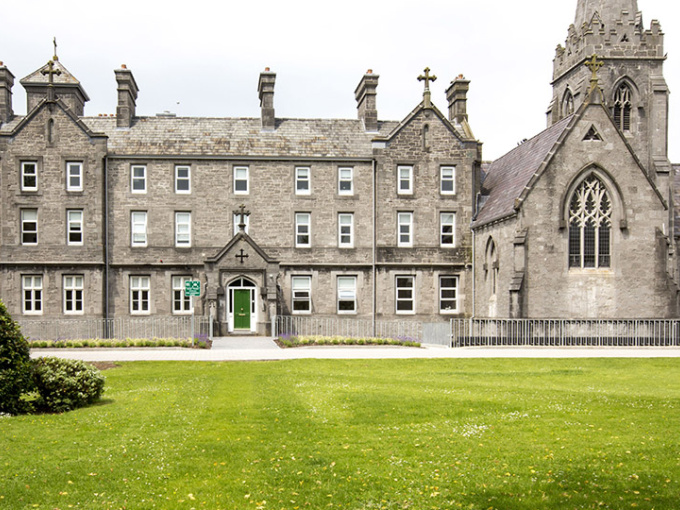Recalling a Local Food Poisoning Tragedy with an International Learning Legacy
 John Henry Newman Building - part of the Mary Immaculate College Campus (formerly Mount St Vincent Industrial School)
John Henry Newman Building - part of the Mary Immaculate College Campus (formerly Mount St Vincent Industrial School)
Over the last few weeks there have been several food recalls issued and a tragic death due to food poisoning. Such a tragedy is a rare occurrence today in Ireland. One of the most significant and deadly cases of food poisoning in Ireland occurred back in 1908 when over seventy children were ill and 9 young girls sadly died within 48 hours.
The 1908 tragedy took place in the Mount St Vincent Industrial School in Limerick which housed 197 girls at the time. Child mortality from food poisoning was not a common occurrence so this tragic event received widespread attention at a local, national and even an international level.
The Mayor of Limerick described the event as ‘the most lamentable calamity which occurred in the city for a long period of years’. According to the newspapers, thousands lined the streets of Limerick to pay their respects to the funeral cortege of the young girls with mass outpouring of public sympathy offered. Most notably, the Pope even sent a telegram from Rome offering his blessing to the community and the children. Condolences were also sent from Lady Aberdeen, the Viceroy’s wife (Ireland was still under British rule at this time).
What was the cause of such a disastrous outbreak? An inquest took place, the details of which were reported in the newspapers. The investigation resulted in tracing the source back to a contaminated beef stew which had been prepared by the older girls as part of their domestic science class. At that time, the domestic science curriculum was a significant part of the girls’ industrial schooling, the roll out of which was inspected each year by the Chief Inspector, Sir James Fagan. As evidenced in his Chief Inspector’s reports, he was a strong advocate for children’s health and wellbeing and according to the reports from 1901-1912, this was one of the best industrial schools at the time although he was highly critical of many other schools.
The girls had prepared the stew the day before and had reheated it for lunch the following day with tragic consequences. The jury returned a verdict of death from ‘cholera nostra due to meat poisoning’. However, the butcher was not impressed! He wrote a strongly worded letter to the Limerick Chronicle highlighting how he had delivered the meat some ten days earlier and the ‘major portion of the meat had caused no ill or fatal effects whatever’ when consumed by the nuns initially. The younger girls had not been sick either as on the fatal day, they had eaten a broth from the bones that had been boiled up. While the epidemiological notes and the inquest informed greater understanding of how the outbreak spread in a clinical manner, they also gave insights into the lives of these young girls living in the institution at this time, their daily routine, their domestic science training and the mealtimes they experienced.
At the time, and in the aftermath, this outbreak made both national and international headlines and was noted as a ‘remarkable’ case. Locally, the outbreak prompted calls for scrutiny of meat inspection and slaughterhouses in Limerick and in Tralee Urban Council minutes, they approved the appointment of a veterinary surgeon soon after. Further afield, the ‘Limerick case’ as it became known, featured in top medical journals and texts. This case was a significant epidemiological case of meat poisoning and Professor McWeeney (Ireland’s first Professor of Pathology) published his conclusions in the British Medical Journal in 1909 as ‘a learning opportunity to reach a wider medical audience’. In the US, the case was reported in JAMA (the Journal of the American Medical Association), and in the aftermath subsequent medical textbooks also referenced this case. Amongst others, this included Osler’s seminal medical text, The Principles and Practice of Medicine, designed for the use of practitioners and students of medicine. The case was also referred to in key texts by Savage (1925) and Dewberry’s (1943) Food poisoning, it’s nature, history and causation measures for it’s prevention and control.
One would hope that out of such tragedy; other potential future cases of food poisoning may have been prevented through greater awareness, shared learning and advances within the field.
The Mount St Vincent building, where these girls lived and died, is now the John Henry Newman Building and part of the Mary Immaculate College Campus, Limerick. Dr Jennifer Pope, a lecturer in Child Health and Wellbeing & Early Childhood in MIC has an office in this building and is pursuing research into the history of the building and the health of children in industrial schools.
For further information on how to prevent food poisoning, recommended food hygiene practices and current food recalls, please see the Food Safety Authority of Ireland for further information.
Dr Jennifer Pope, Lecturer in Child Health and Wellbeing & Early ChildhoodMary, Immaculate College



